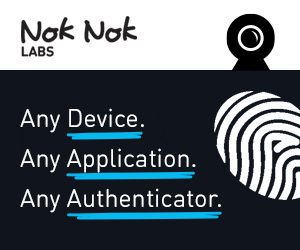It has been four years since Touch ID popularized fingerprint biometrics on mainstream smartphones and we are now close to seeing fingerprint sensor ubiquity on mobile devices. Recent research from Acuity Market Intelligence states that there are over 500 biometric smartphone models on the market, and what’s more: they are affordable, with many landing under the $150 mark. But ubiquity and proliferation is not the end of the fingerprint story on the smartphone, and we are now experiencing an interesting time for the biometric modality in which we can expect to see a great deal of innovation, competition, and adaptation to meet the demands of a rapidly evolving mobile technology landscape.
 In the time since Touch ID, mobile biometrics have become familiar, with numerous applications in FinTech, enterprise, healthcare, and more. The growing range of uses has brought with it the rising prominence of other modalities – face, voice, iris, even palm vein – and multiple authentication options have shifted the popular focus away from fingerprints as the dominant mainstream biometric type. Indeed, going into 2017, the multimodal mobile biometrics landscape seemed to be reaching an interesting state of balance, favoring user choice over any single authentication method. That’s why the surge in fingerprint innovation we witnessed first hand at Mobile World Congress last week was so notable: it proved that fingerprint biometrics have reached a level of maturity as a technology wherein they are able to truly meet the ever-changing design needs of the consumer mobile market.
In the time since Touch ID, mobile biometrics have become familiar, with numerous applications in FinTech, enterprise, healthcare, and more. The growing range of uses has brought with it the rising prominence of other modalities – face, voice, iris, even palm vein – and multiple authentication options have shifted the popular focus away from fingerprints as the dominant mainstream biometric type. Indeed, going into 2017, the multimodal mobile biometrics landscape seemed to be reaching an interesting state of balance, favoring user choice over any single authentication method. That’s why the surge in fingerprint innovation we witnessed first hand at Mobile World Congress last week was so notable: it proved that fingerprint biometrics have reached a level of maturity as a technology wherein they are able to truly meet the ever-changing design needs of the consumer mobile market.
Convenience, Security, Aesthetics
 The dual benefits of biometric security in all deployments are convenience and security. And while aesthetic design is a part of practically all hardware implementations, rarely are the demands as great as those in the consumer mobile device market, where space is a premium and visual style is an important differentiating factor. Starting with Touch ID, we saw the most obvious deployment of a fingerprint sensor on a smartphone—embedded in the home button. This is the same place where subsequent Samsung Galaxy smartphones would hide their own sensors.
The dual benefits of biometric security in all deployments are convenience and security. And while aesthetic design is a part of practically all hardware implementations, rarely are the demands as great as those in the consumer mobile device market, where space is a premium and visual style is an important differentiating factor. Starting with Touch ID, we saw the most obvious deployment of a fingerprint sensor on a smartphone—embedded in the home button. This is the same place where subsequent Samsung Galaxy smartphones would hide their own sensors.
But front-facing space became more valuable, and as the screen of the smartphone has grown to accommodate the shift toward smartphones as multimedia entertainment devices, the home button has started to fall out of fashion in general. In this sense, other phones that have deployed sensors on the back of the device underneath the camera have found themselves at a trendy advantage. Devices like the LG G5 boast a button free front-side, while still offering fingerprint security on the rear.
Rear-mounted sensors, while not without their advantages, still leave something to be desired from an end-user perspective. Over a decade of smartphone use has culturally defined the interactive part of a phone as the front side, making a back-side sensor less intuitive than other authentication options like contactless biometric software that leverages the front facing camera. Thankfully, fingerprint biometrics have reached a crucial point in their evolution, and OEMs no longer have to choose between fashion and function.
The View From Barcelona
 Readers of FindBiometrics will know that the race to integrate under-glass fingerprint sensors into the front side of smartphones ended late last year with high profile launches from the likes of Huawei and Porsche Design. This has allowed for true button-free smartphone design in step with design trends. But this evolutionary phase for fingerprint sensors isn’t over just yet.
Readers of FindBiometrics will know that the race to integrate under-glass fingerprint sensors into the front side of smartphones ended late last year with high profile launches from the likes of Huawei and Porsche Design. This has allowed for true button-free smartphone design in step with design trends. But this evolutionary phase for fingerprint sensors isn’t over just yet.
The latest under-glass sensor deployment from Huawei was announced at last week’s Mobile World Congress. Huawei’s P10, however, still has a button-ish aspect to its sensor as it occupies the same space as the traditional home button, it just has no moving parts. Two new developments in the fingerprint space came out of MWC that ought to make way for sensors to grow out of this awkward transition of buttondom and into a fully mature solution ready to be deployed in any type of mobile device without compromise.
First is FPC SenseTouch, a software solution allowing Fingerprint Cards’ sensors to become pressure sensitive. Immediately, this innovation helps offer the functionality of a button without the moving parts. In an under glass-deployment, SenseTouch is a problem solver, but it is also future-minded. If an FPC sensor is mounted in the display of a touch screen, this kind of technology has a great deal of synergy with Force Touch style interfaces like those featured on current generation iPhones.
The second big innovation is the world’s first in-display fingerprint sensor, unveiled by Goodix at MWC. While the sensor itself has not been deployed in a device yet, the appeal is readily apparent. On smartphones, it allows not only for button-free design, but also for nearly unrestricted screen real estate. Goodix’s new sensor is a step beyond the big idea patents that have been stoking excitement in this space, bringing the world one design win away from fingerprint biometrics embedded in the middle of a smartphone screen.
We are on the verge of an exciting new era in mobile fingerprint biometrics. The competitive and innovative players within the market have shown they are capable of providing technology that meets the demands of a collaborative, often fickle arena, where functional necessity meets high standards of beauty. If history is any indication, the need to adapt won’t end with in-display sensors either. As we will explore in the coming weeks, mobility has come to encompass much more than just smartphones. IoT, connected cars, wearable tech and more are all presenting new aesthetic and ergonomic demands on biometric solutions providers. In the current mobile climate, which is dynamic and ever changing, the only true constant is the challenge to stay adaptable—and that’s a need the fingerprint biometrics market is meeting head-on.
*
Stay posted to FindBiometrics throughout the month of March as we continue to focus on the rapidly evolving mobile biometric market. Be sure to sign up for our Mobile Biometrics Month 2017 Webinar, and follow us on Twitter to stay on top of all the most important identity management news.
Mobile Biometric Month 2017 is made possible by our sponsors: Precise Biometrics, Aware, Inc., and Nok Nok Labs


Follow Us